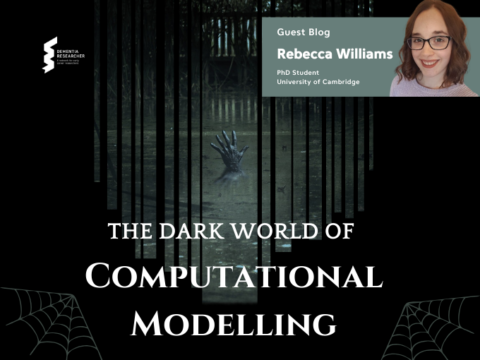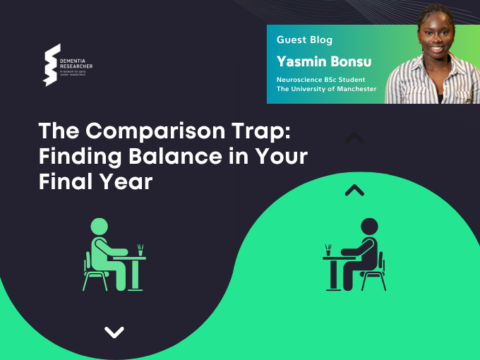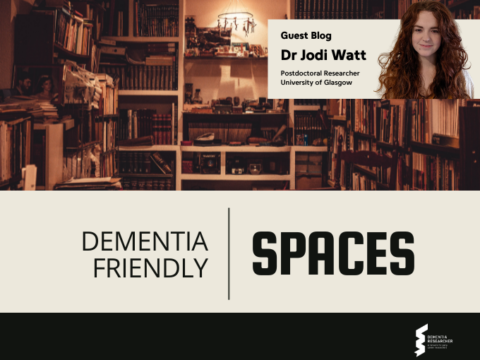In many cases, but not all, there are unjust differences in the health and opportunities between people who are affected by dementia and those that are not. For example, access to timely and good quality healthcare, benefits, housing, work, and rights. These are just a few of the many inequalities people may face. Another inequality, and one that shaped my initial entry into academia, is people’s participation in physical activity (encompassing sports and leisure).
In a society manufactured by elites and the closely, and increasingly so, connected private sector, profit, and in recent times, austerity has been the horrible ideology of the state. Key arms of the public sector through which many inequalities can be managed such as education, housing, prison, health, and social care, have been hallowed out and left in state of ‘emergency’. Instead, action on inequalities tends to be driven by local government, Research and Development departments, and innovation by Voluntary, Community and Social Enterprises at place and neighbourhood levels.
In this post I will provide a brief introduction to the evidence base on physical activity and dementia, which clearly suggests action on increasing participation in physical activity is a political mandate. I will also include my experiences of developing and evaluating an intervention to increase opportunities for people affected by dementia to participate in physical activity.
Levels of physical activity
Hopefully you don’t need to read a fancy paper to know that being physical active is good for you. But if you did the science is definitely in favour. It is preventative against a range of long-term conditions and can even reduce the risk of dementia by up to 50% (please see the references at the end of this blog for supporting information) . In a more qualitative sense physical activity is socially rewarding, offering opportunities to connect with others and community, harnessing and maintaining a sense of self and place. It really is no surprise that being physically active supports healthy ageing and can increase the amount of time spent in good health, narrowing the gap between rich and poor populations.
Just because somethings good for us doesn’t mean we will do it though. I would have quit smoking years ago if this were the case. Physical activity is no exception. Participation levels are low across the board, but as the graph illustrates, the number of people who are physically active in England drops off in later years significantly. In the over 55s category around only 50% are considered active, which will be a considerably lower figure for people living with dementia and their carers who are suggested to be less physically active than the general population.
What’s stopping people?
So why are we seeing this age-related drop in physical activity levels. Well, like any social issue, it’s complex. Caused by much more than individual behaviour, although that’s the framing the media (polity) tend to adopt, because addressing the bigger picture, if you like, is far more costly in the immediate future (cost efficient in the long term, however).
Barriers to regular physical activity for people living with dementia, some of which apply to older adults as well, include physical and cognitive impairments, need for family/carer support, professionals having limited understanding to offer physical activity, societal stigma, and that there are simply not enough accessible opportunities.
For carers then, physical health, having the time for physical activity, and the nature of their care work are reported barriers. An interesting theme is the role of the carer in motivating and facilitating physical activity in the person living with dementia. Considering the nature of barriers for carers then, there seems opportunities for dyadic interventions that better reflect the relational and practical aspects of care.
To increase participation and prevent physical activity related inequalities the evidence base couldn’t be clearer. A focus is needed, not only individual behaviour and relational factors, but organisational and societal issues as well (what I referenced earlier as ‘the big picture’). For example through the social–ecological model of health to influence opportunities at policy, community, organisation, and individual levels.
I have been lucky enough to support the development and evaluation of an intervention aimed at support positive change through empowering professionals with the knowledge and confidence to increase opportunities for people. A short online course called Championing Physical Activity for People Affected by Dementia.
Development stage
The course was developed at the Association for Dementia Studies of the back of PhD research completed at the university in this area. We engaged people ensuring the voice of lived experience remained central to the vision of the course, influencing the development of content and priorities.
The course is aimed at a diverse range of professionals to reflect the many places in which physical activity can be facilitated. For example, the initial pilot included health, housing, leisure, and education professionals. Five topics are covered over 6-week through a blend of synchronise and asynchronies learning, including taught sessions and self-guided activities such as video clips, reading materials, and online discussion boards. The ultimately goal being that more people feel empowered to provide opportunities for people to participate in physical activity.
Evaluation stage
Evaluation of the pilot comprised data from pre-post course questionnaire, focus group, interview, and a reflective diary completed by the course lead. Given limited resources at our disposal to develop and evaluate the intervention, we kept the focus to assessing the impact on practitioner knowledge and confidence to deliver leisure and physical activities for people affected by dementia.
Self-report data from questionnaires shows a marked change in professionals’ knowledge, perceived competency, and confidence following completion of the course. This was also supplemented by qualitative accounts of change and some promising preconditions for future impact on practice.
To ensure we did not neglect a focus on improvement, as there was much learning to be extracted from the project, we captured key factors of course delivery affecting changes. Three key themes arose from the analysis:
- Delivery mode and course structure
“The course was interesting throughout, and I was able to fit it in around my job.” (survey response)
- Multidisciplinary approach enabled creativity and community of learning from diverse practice
“one great thing I took away…is the different dynamics of people, of where they worked, what sort of things they were doing, but also at the same time, that networking, that sharing information” (Social Housing Worker)
- Making the remote real through lived experience
“it’s the videos, people’s personal stories”…”it gets you thinking and…puts you…in their mindset and what it might feel like to have barriers and just focus on why it’s so important” (Care Home Worker)
Following feedback and evaluation the course has been amended and updated. We will be running the course again Not for Profit this Autumn and we welcome any interest. Please see the flyer and contact Course Lead Dr Chris Russell (c.russell@worc.ac.uk) for further information.
Nathan
Further Reading
Sport England (2020) We are undefeatable. Available at: www.sportengland.org/campaigns-and-our-work/we-are-undefeatable (Accessed: 1 June 2022)
Farina, N., Williams, A., Clarke, K., Hughes, L. J., Thomas, S., Lowry, R. G., & Banerjee, S. (2020). Barriers, motivators and facilitators of physical activity in people with dementia and their family carers in England: dyadic interviews. Https://Doi.Org/10.1080/13607863.2020.1727852,
Hobson, N., Dupuis, S. L., Giangregorio, L. M., & Middleton, L. E. (2019). Perceived Facilitators and Barriers to Exercise Among Older Adults With Mild Cognitive Impairment and Early Dementia. Journal of Aging and Physical Activity, 28(2), 208–218. https://doi.org/10.1123/JAPA.2019-0010
Junge, T., Ahler, J., Knudsen, H. K., & Kristensen, H. K. (2020). The effect and importance of physical activity on behavioural and psychological symptoms in people with dementia: A systematic mixed studies review. Dementia, 19(3), 533–546. https://doi.org/10.1177/1471301218777444
Soni, M., Orrell, M., Bandelow, S., Steptoe, A., Rafnsson, S., d’Orsi, E., Xavier, A., & Hogervorst, E. (2017). Physical activity pre- and post-dementia: English Longitudinal Study of Ageing. Https://Doi.Org/10.1080/13607863.2017.1390731, 23(1), 15–21.

Nathan Stephens
Author
Nathan Stephens is a PhD Student and unpaid carer, working on his PhD at University of Worcester, studying the Worcestershire Meeting Centres Community Support Programme. Inspired by caring for both grandparents and personal experience of dementia, Nathan has gone from a BSc in Sports & Physical Education, an MSc in Public Health, and now working on his PhD.

 Print This Post
Print This Post





Very informative article. In addition – activities should tailored to the individual’s preferences and abilities and can evoke positive emotions, leading to increased happiness and overall emotional well-being.